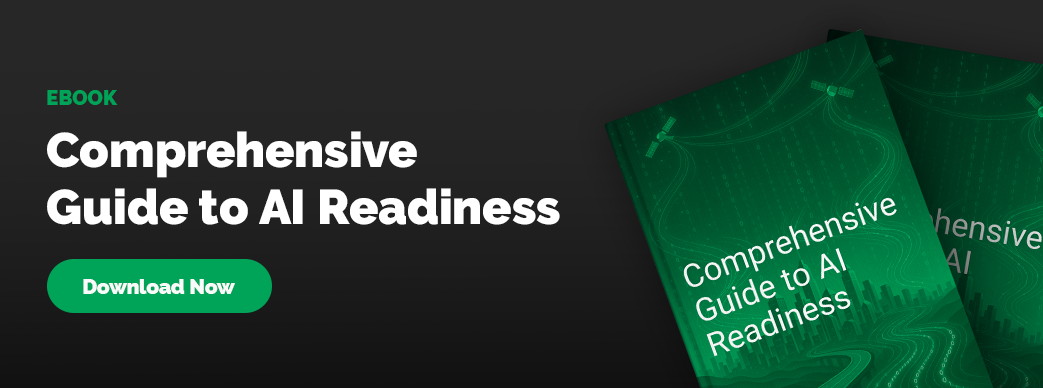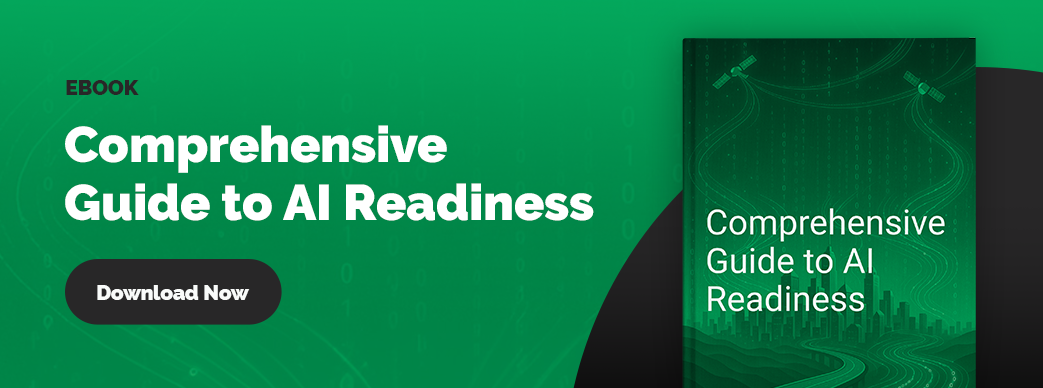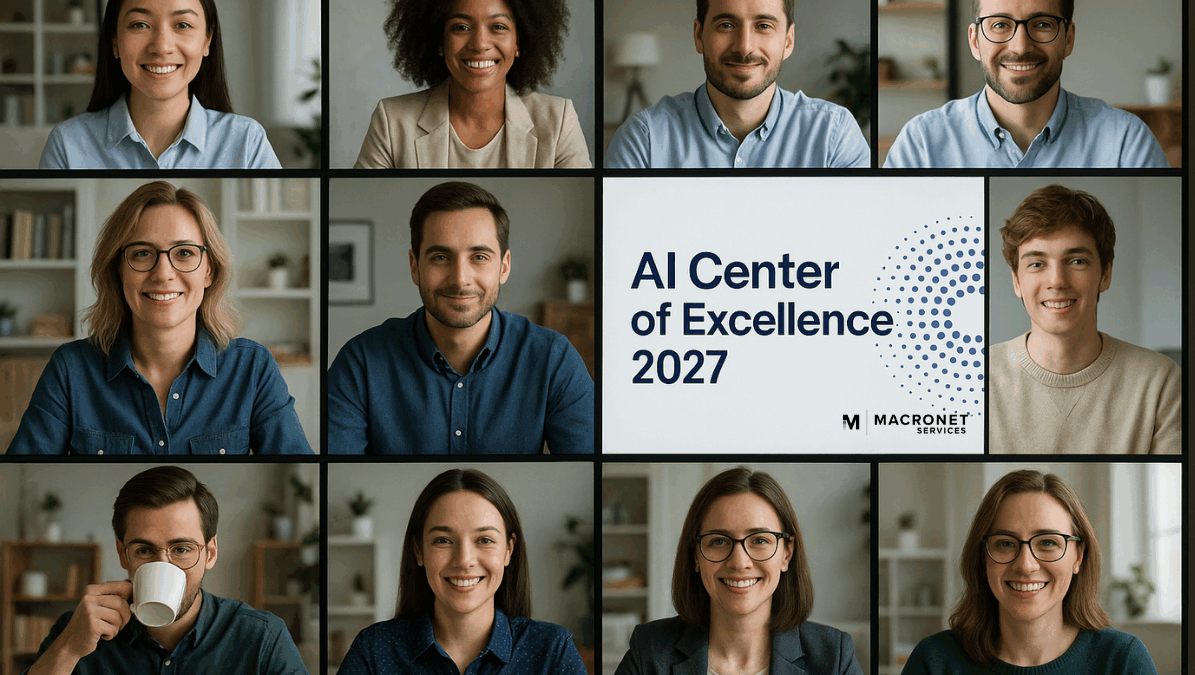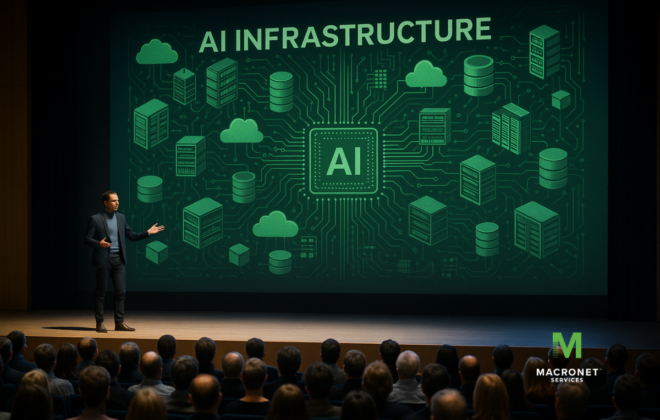Building and Optimizing an AI Center of Excellence: A Comprehensive Guide for Business Leaders
In an era where Artificial Intelligence (AI) is reshaping industries, the AI Center of Excellence (CoE) has emerged as a cornerstone for organizations aiming to harness AI’s transformative potential. Far more than a technical hub, an AI CoE is a strategic entity that drives AI adoption, optimizes solutions, ensures robust AI governance, and aligns AI initiatives with overarching business goals. At Macronet Services, we’ve crafted this in-depth guide to empower business leaders and professionals to build and enhance AI CoEs that deliver measurable value and sustainable competitive advantage.
What Is an AI Center of Excellence and Why It Matters
An AI CoE is a dedicated organizational structure that centralizes expertise, resources, and best practices to accelerate AI initiatives across an enterprise. It acts as a strategic nucleus, breaking down silos, fostering collaboration, and ensuring that AI projects deliver tangible business outcomes. For business leaders, an AI CoE is not just a luxury—it’s a necessity to transform AI from a theoretical concept into a practical driver of growth, operational efficiency, and enhanced customer experiences. The Macro AI Podcast is a good resource to learn more about AI COEs and other topics that business leaders should understand in the era of AI.
Key Roles Within an AI CoE
A thriving AI CoE integrates a diverse team of specialists, each contributing unique skills:
- AI Strategists: Define the AI roadmap, ensuring alignment with long-term business objectives such as market expansion or cost reduction.
- Data Scientists & AI Engineers: Design, train, and refine AI models, leveraging advanced techniques like deep learning or reinforcement learning.
- Data Engineers: Build and maintain data pipelines, ensuring data is clean, accessible, and scalable for AI applications.
- MLOps Specialists: Oversee the AI lifecycle—development, testing, deployment, and monitoring—using tools like Kubeflow or MLflow.
- Compliance Officers & AI Ethicists: Enforce regulatory compliance (e.g., GDPR, HIPAA) and ethical standards, addressing issues like bias and transparency.
- Business Analysts & Domain Experts: Bridge the gap between technical teams and business units, ensuring AI solutions solve real-world problems, such as improving supply chain logistics or customer retention.
This collaborative ecosystem ensures that AI initiatives are technically robust, ethically sound, and strategically impactful.
Tangible Benefits of an AI CoE
The value of an AI CoE is measurable and multifaceted:
- Reduced Time-to-Market: Standardized frameworks and reusable assets can cut development cycles by months. For instance, a pre-built AI pipeline might reduce deployment time for a new chatbot from six months to six weeks.
- Improved Compliance: Centralized oversight ensures adherence to evolving data privacy laws, avoiding costly fines—e.g., GDPR penalties can reach €20 million or 4% of annual revenue.
- Cost Efficiency: Shared resources like cloud infrastructure or pretrained models eliminate redundant spending across departments.
- Enhanced Innovation: A collaborative environment sparks creative solutions, such as using AI to predict equipment failures in manufacturing, saving millions in downtime costs.
- Competitive Advantage: Companies with AI CoEs can respond faster to market shifts, like deploying AI-driven personalization to counter a competitor’s campaign.
 The Evolution of AI CoEs: From Concept to Cornerstone
The Evolution of AI CoEs: From Concept to Cornerstone
The Center of Excellence concept dates back to the 1990s, initially used for quality management and IT standardization. Its evolution into an AI CoE reflects the growing complexity of modern AI strategy, driven by challenges like data fragmentation, ethical dilemmas, and the need for scalable deployment.
Historical Context and Early Adopters
Early AI CoEs emerged as organizations recognized the need to consolidate AI expertise. For example:
- JPMorgan Chase: Launched its AI CoE to centralize machine learning efforts, improving fraud detection and risk modeling across its global operations.
- Siemens: Established an AI CoE to streamline industrial automation, integrating AI into smart factories for predictive maintenance and quality control.
Initially, many companies housed AI within broader data and analytics CoEs, but as AI technologies—like natural language processing (NLP) and computer vision—matured, specialized AI CoEs became essential. This shift addressed AI-specific challenges, such as the “black box” problem (where model decisions lack transparency) and the rapid pace of innovation in tools like TensorFlow or PyTorch.
Current Landscape
Today, 37% of large U.S. companies have an AI CoE, according to industry surveys, reflecting its status as a proven framework for enterprise AI transformation. The evolution continues as CoEs adapt to emerging needs, such as integrating AI with IoT or ensuring ethical AI in regulated sectors like healthcare and finance.
Core Objectives and Functions of an AI CoE
An effective AI CoE delivers on four strategic pillars, each supported by specific functions and real-world applications:
- Accelerating AI Adoption
- Objective: Rapidly integrate AI across the organization.
- Functions: Develop standardized processes, provide training, and create reusable AI templates.
- Example: A retail AI CoE might deploy a unified customer segmentation model, enabling marketing, sales, and e-commerce teams to personalize campaigns in weeks rather than months.
- Optimizing AI Solutions
- Objective: Enhance the performance and scalability of AI applications.
- Functions: Conduct A/B testing, refine models, and establish innovation labs or hackathons.
- Example: An AI CoE in logistics could optimize a delivery routing AI, reducing fuel costs by 15% through iterative improvements and real-time data integration.
- Ensuring AI Governance
- Objective: Maintain ethical, transparent, and compliant AI practices.
- Functions: Implement bias detection tools, enforce data security, and document decision-making processes.
- Example: A healthcare AI CoE might use Explainable AI (XAI) to ensure a diagnostic tool’s recommendations are interpretable, meeting FDA requirements and building clinician trust.
- Aligning with Business Strategy
- Objective: Prioritize AI projects with the highest business impact.
- Functions: Collaborate with stakeholders to define KPIs, assess ROI, and adjust priorities.
- Example: A financial services AI CoE could focus on an AI fraud detection system that cuts losses by $10 million annually, directly supporting revenue protection goals.
These objectives ensure that an AI CoE is a value-driven entity, not just a technical exercise.
Choosing the Right Organizational Model
The structure of your AI CoE shapes its effectiveness. Below are the three primary models, with detailed pros, cons, and scenarios:
Centralized Model
- Description: A single, unified team oversees all AI activities enterprise-wide.
- Advantages: Ensures consistency in standards, simplifies compliance, and centralizes expertise—ideal for resource-constrained organizations.
- Disadvantages: Can be slow to respond to diverse needs, risking bottlenecks or disconnects with business units.
- Best For: Small to mid-sized firms or those new to AI, needing tight control.
- Scenario: A 200-employee startup might use a centralized CoE to develop a foundational AI capability, like a customer support chatbot, before scaling.
Federated Model
- Description: AI expertise is distributed across business units, with loose central coordination.
- Advantages: Offers agility, empowers localized innovation, and aligns with specific unit goals—perfect for large, complex organizations.
- Disadvantages: Risks inconsistent practices, duplicated efforts, or data silos if coordination falters.
- Best For: Multinational or diversified companies with mature AI capabilities.
- Scenario: A global manufacturer could use a federated model, allowing its European division to focus on AI for supply chain efficiency while its Asia-Pacific team tackles customer analytics.
Hybrid Model
- Description: Combines centralized governance (e.g., ethics, standards) with decentralized execution.
- Advantages: Balances control with flexibility, enabling scalability while maintaining oversight.
- Disadvantages: Demands strong communication and collaboration to avoid confusion or overlap.
- Best For: Growing organizations with diverse needs and moderate AI maturity.
- Scenario: A retailer with 50+ stores might use a hybrid model, setting enterprise-wide AI ethics policies centrally while allowing regional teams to deploy tailored inventory prediction tools.
Choosing Your Model
Assess your organization’s size, complexity, AI maturity, and strategic priorities. A small firm might start centralized and transition to hybrid as it grows, while a conglomerate might adopt a federated approach to leverage its scale.
Critical Success Factors for a Thriving AI CoE
Building a high-impact AI CoE hinges on six key factors, each with actionable strategies:
- Executive Sponsorship
- Importance: Secures funding, resources, and organizational buy-in.
- Strategy: Present pilot projects (e.g., an AI chatbot saving 10 hours weekly) or data-driven forecasts (e.g., $5M in savings from AI automation) to win C-suite support.
- Example: A CEO might back an AI CoE after a proof-of-concept reduces customer churn by 5%, proving immediate value.
- Multidisciplinary Talent
- Importance: Combines technical expertise with business acumen and ethical insight.
- Strategy: Hire specialists (e.g., NLP experts), upskill existing staff via certifications (e.g., AWS Machine Learning), and foster diversity in backgrounds to spark innovation.
- Example: A CoE might recruit a sociologist to complement data scientists, ensuring AI tools like hiring algorithms avoid cultural biases.
- Robust Data Governance
- Importance: Ensures data quality, security, and accessibility—the foundation of effective AI.
- Strategy: Deploy data lakes, enforce metadata standards, and use tools like Collibra for governance.
- Example: A telecom CoE could unify call logs and billing data in a data lake, enabling an AI churn prediction model with 90% accuracy.
- Agile Methodologies and MLOps
- Importance: Enables rapid iteration and scalable deployment.
- Strategy: Adopt sprints for development and MLOps tools (e.g., Docker, Jenkins) for automation.
- Example: An e-commerce CoE might use CI/CD pipelines to update a recommendation engine weekly, adapting to seasonal trends.
- Ethical AI Practices
- Importance: Builds trust, mitigates risks, and ensures regulatory compliance.
- Strategy: Establish an ethics board, use XAI tools (e.g., SHAP), and conduct regular audits.
- Example: A lending CoE could deploy bias detection software to ensure loan approvals are equitable across demographics, avoiding legal and reputational risks.
- Measuring Business Value
- Importance: Quantifies ROI and justifies ongoing investment.
- Strategy: Track KPIs like cost savings, revenue uplift, or operational efficiency gains.
- Example: A manufacturing CoE might measure a 25% reduction in defects from an AI quality control system, translating to $2M in annual savings.
Overcoming Common Challenges
AI CoEs face persistent obstacles. Here are detailed strategies to address them:
- High Failure Rates and “Pilot Purgatory”
- Issue: 70-85% of AI projects fail to reach production, per Gartner.
- Solution: Focus on high-impact pilots, use MLOps for scalability, and set clear success metrics.
- Example: A retailer’s CoE might prioritize an AI stock replenishment tool with a target of 10% fewer stockouts, ensuring it moves to production.
- Data Issues
- Issue: Fragmented, poor-quality data undermines AI results.
- Solution: Standardize data with ETL processes, use data virtualization (e.g., Denodo), and enforce quality checks.
- Example: A hospital CoE might integrate EHR systems into a unified dataset, improving AI diagnostics accuracy by 20%.
- Talent Gaps
- Issue: AI expertise is scarce and competitive.
- Solution: Offer internal training (e.g., TensorFlow workshops), partner with universities, or tap freelance platforms like Upwork.
- Example: An AI CoE could sponsor a master’s program cohort, securing a pipeline of data scientists.
- Organizational Resistance
- Issue: Employees fear job displacement or distrust AI.
- Solution: Highlight AI as an augmentation tool and provide reskilling (e.g., teaching staff to use AI dashboards).
- Example: A bank CoE might show how an AI fraud tool frees staff for customer relationship building, boosting morale.
- Governance Overreach
- Issue: Excessive rules can stifle innovation.
- Solution: Use adaptive governance, balancing oversight with flexibility (e.g., sandbox environments for experimentation).
- Example: A tech CoE might enforce data privacy but allow teams to test new NLP models freely within guidelines.
- Ethical Pitfalls
- Issue: Bias or opaque models erode trust.
- Solution: Deploy fairness tools (e.g., IBM’s AI Fairness 360) and mandate transparency reports.
- Example: A hiring CoE could audit an AI resume screener, ensuring it doesn’t favor certain demographics unfairly.
- Funding Challenges
- Issue: AI demands significant upfront investment.
- Solution: Start with quick wins to build a business case, then scale funding.
- Example: A logistics CoE might launch an AI route optimizer saving $500K in fuel costs, unlocking budget for broader initiatives.
 The Future of AI CoEs: What’s Next?
The Future of AI CoEs: What’s Next?
AI is evolving rapidly, and CoEs must adapt. Here’s a detailed look at emerging trends:1. Advisory Models
- Shift: From centralized control to strategic guidance, empowering business units.
- Implication: CoEs will set policies and best practices while fostering decentralized innovation.
- Example: A future CoE might define AI security standards but let marketing teams build their own predictive models.
- Advanced AI Paradigms
- Artificial General Intelligence (AGI): Human-like AI will demand new ethical and technical frameworks.
- Multimodal AI: Combining text, images, and audio requires expertise in diverse data types.
- Example: A healthcare CoE might integrate patient histories, X-rays, and voice notes into a multimodal AI for holistic diagnoses.
- Decentralized AI Ecosystems
- Trend: Distributed systems like federated learning will need CoE oversight for interoperability and ethics.
- Implication: CoEs will standardize protocols across ecosystems.
- Example: A financial CoE could ensure privacy in a federated AI model shared with partner banks.
- Emerging Technologies and Trends
- Quantum Computing: Could accelerate AI training, requiring CoEs to upskill in quantum algorithms.
- AI Ethics: A growing field, necessitating dedicated roles like Chief AI Ethics Officer.
- Sustainability: CoEs may prioritize energy-efficient AI to meet ESG goals.
- Example: A CoE might explore quantum-enhanced AI for drug discovery or audit AI’s carbon footprint.
Conclusion: Your Path to AI Excellence
An AI Center of Excellence is a strategic imperative for businesses aiming to thrive in the AI-driven future. By mastering its evolution, objectives, and success factors—and proactively tackling challenges—you can build a CoE that drives AI innovation, ensures ethical AI, and delivers measurable AI optimization.
Actionable Steps
- Start Small: Launch a pilot, like an AI customer insights tool, to prove value.
- Iterate and Scale: Use pilot results to refine processes and expand scope.
- Stay Ahead: Monitor trends like quantum AI or ethics regulations to keep your CoE relevant.
At Macronet Services, we specialize in helping businesses build and optimize AI Centers of Excellence tailored to their unique needs. Contact us anytime to discuss how we can elevate your AI strategy.
Frequently Asked Questions about AI COEs:
What is an AI Center of Excellence (CoE) and why is it important for businesses in 2025?
Answer: An AI CoE is a dedicated team that centralizes AI expertise, resources, and governance to drive enterprise-wide AI adoption. It’s crucial in 2025 as it aligns AI with business goals, reduces costs, ensures compliance, and accelerates innovation, giving companies a competitive edge in an AI-driven market.
How does an AI CoE improve business efficiency and innovation?
Answer: An AI CoE streamlines AI project development, reduces redundancies, and fosters collaboration across teams. By standardizing processes and encouraging experimentation, it can cut deployment times (e.g., chatbots from six months to six weeks) and spark innovative solutions like predictive maintenance.
What are the key roles in a successful AI Center of Excellence?
Answer: A thriving AI CoE includes AI strategists, data scientists, data engineers, MLOps specialists, compliance officers, AI ethicists, and business analysts. These roles ensure technical expertise, ethical governance, and alignment with business objectives.
How can an AI CoE ensure ethical AI practices and compliance in 2025?
Answer: An AI CoE implements governance frameworks, uses Explainable AI (XAI) tools like SHAP, and conducts regular audits to address bias, ensure transparency, and comply with regulations like GDPR or HIPAA, building trust and avoiding penalties.
What are the benefits of establishing an AI CoE for enterprise AI adoption?
Answer: Benefits include faster time-to-market, cost savings through shared resources, improved compliance, enhanced innovation, and a competitive advantage. For example, a CoE can reduce AI project costs by eliminating redundant spending and improve ROI through targeted use cases.
What challenges do AI CoEs face and how can they be overcome?
Answer: Challenges include high project failure rates, data quality issues, talent shortages, and organizational resistance. Solutions involve focusing on high-impact pilots, standardizing data with ETL processes, upskilling staff, and using AI as an augmentation tool to gain employee buy-in.
What is the best organizational model for an AI CoE in 2025?
Answer: Options include centralized (for control), federated (for agility), or hybrid (balancing both). A hybrid model suits growing firms, combining centralized governance with decentralized execution, as seen in retailers deploying regional AI tools under enterprise standards.
How does an AI CoE align AI initiatives with business strategy?
Answer: An AI CoE collaborates with stakeholders to define KPIs, prioritize high-impact projects, and measure ROI. For instance, a financial CoE might focus on a fraud detection system that saves $10M annually, directly supporting revenue goals.
What are the emerging trends for AI CoEs in 2025?
Answer: Trends include shifting to advisory models, adopting multimodal AI, leveraging quantum computing, and prioritizing sustainability. CoEs will also focus on federated learning and ethical AI to meet regulatory and ESG demands.
How can businesses start building an AI CoE effectively?
Answer: Start with a pilot project to prove value, secure executive sponsorship, assemble a multidisciplinary team, and establish governance frameworks. Iterate based on results and scale with tools like MLOps to ensure long-term success. Contact Macronet Services for tailored guidance.
Tags In
Related Posts
Recent Posts
- Tier 1 vs Tier 2 vs Tier 3 ISPs Explained: The Complete Guide for IT Leaders
- America’s AI Action Plan 2025: What CEOs, CIOs, and CFOs Need to Know
- The AIoT Advantage: Harnessing the Convergence of Artificial Intelligence and the Internet of Things
- Quack AI Governance in the Age of Algorithmic Hype
- NVIDIA Corporation: A Strategic Analysis for Business Executives Navigating the AI Ecosystem
Archives
- August 2025
- July 2025
- June 2025
- May 2025
- April 2025
- March 2025
- February 2025
- January 2025
- December 2024
- November 2024
- October 2024
- September 2024
- August 2024
- July 2024
- June 2024
- May 2024
- April 2024
- March 2024
- February 2024
- January 2024
- December 2023
- November 2023
- October 2023
- September 2023
- August 2023
- July 2023
- June 2023
- May 2023
- April 2023
- March 2023
- February 2023
- January 2023
- December 2022
- November 2022
- October 2022
- September 2022
- August 2022
- July 2022
- June 2022
- May 2022
- April 2022
- March 2022
- February 2022
- January 2022
- December 2021
- November 2021
- October 2021
- September 2021
- August 2021
- July 2021
- June 2021
- May 2021
- April 2021
- March 2021
- December 2020
- September 2020
- August 2020
- July 2020
- June 2020
Categories
- All (19)
- Satellite (1)
- Artificial Intelligence (7)
- Travel (1)
- Sports (1)
- Music (1)
- News (275)
- Design (3)
- Clients (12)
- Uncategorized (1)
- Tips & tricks (25)
- Inspiration (9)
- Client story (1)
- Unified Communications (196)
- Wide Area Network (309)
- Cloud SaaS (60)
- Security Services (71)



